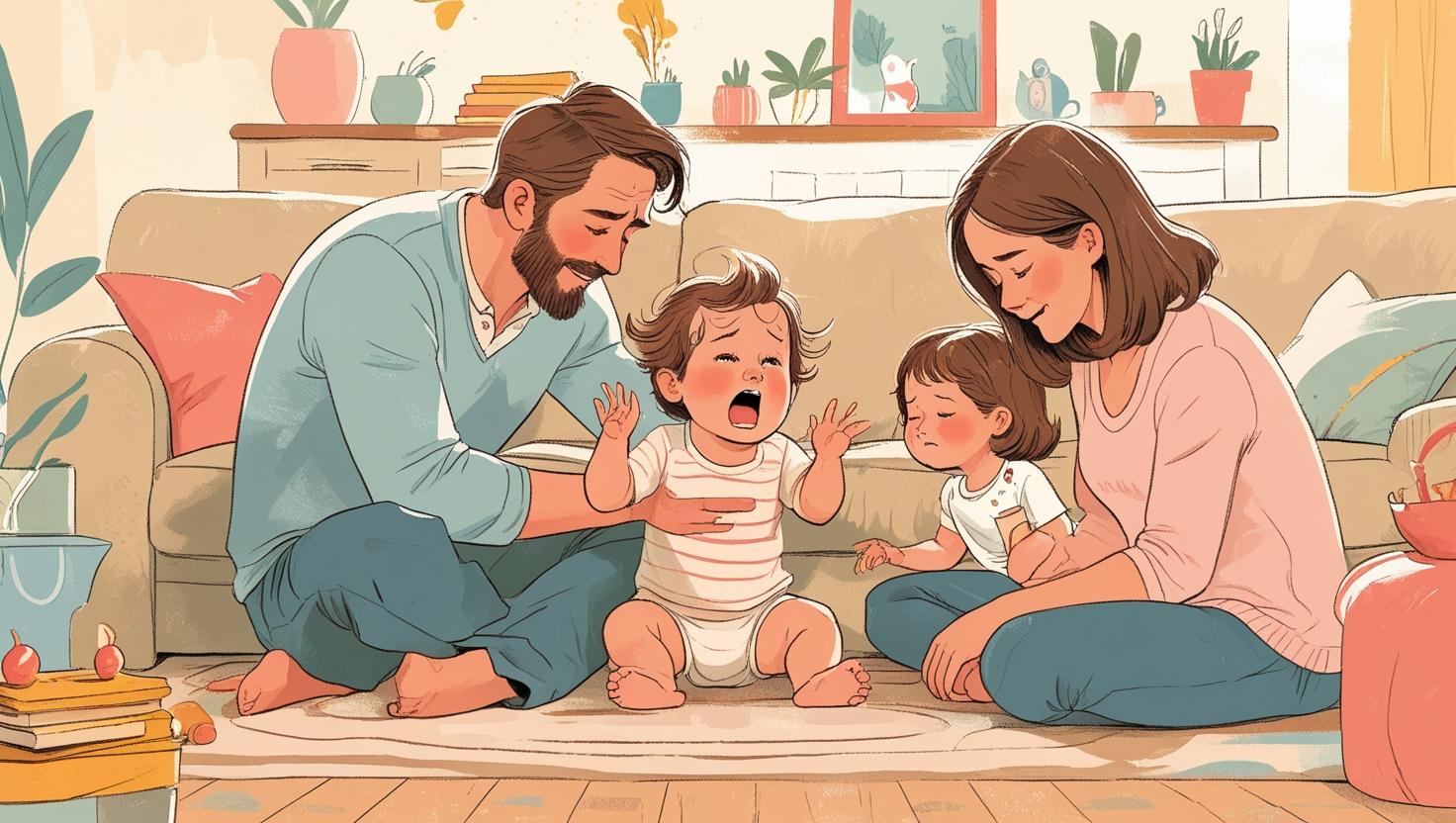
Introduction: Are Toddler Tantrums Normal?
Does your toddler suddenly start screaming and yelling anywhere? Do they lie down on the floor and cry in public places like shopping malls, making you feel embarrassed? If this sounds familiar, you are not alone.Toddler tantrums are completely normal. They are part of your child’s emotional development. But that doesn’t mean you’re helpless. its not difficult to handle.
In this blog, we’ll talk about:
• Why toddler tantrums happen
• Types of tantrums
• Step-by-step ways to handle them
• Real-life parenting tips
• What not to do during a tantrum
Why Do Toddler Tantrums Happen?
When children aged 1 to 5 haven’t fully developed their speaking abilities, they find it difficult to express their emotions and needs. So, they use tantrums to communicate their frustration.
Common reasons for tantrums:
• Hunger
• Lack of sleep
• Frustration (unable to do something)
• Hearing a “no” from parents
• Overstimulation (too much noise or crowd)
• Need for attention
Types of Tantrums – It’s Important to Recognize Them
1. Frustration Tantrum
“When I want to do it myself!” – but they can’t, and that leads to frustration.
2. Attention-Seeking Tantrum
When you’re busy and your child wants your attention, tantrums can start.
3. Power Struggle Tantrum
You said “no” but your child expected a “yes” – result: drama, crying, resistance, and tantrums to get their way.
4. Tiredness or Overstimulation Tantrum
Lack of sleep or too much noise can cause full-blown meltdowns.
Step-by-Step Guide: How to Handle Toddler Tantrums
Step 1: Stay Calm (Even if Your Child Isn’t)
Your calmness matters the most. If you yell too, the situation will get worse.
Tip: Take a deep breath. Sit down to their level. Speak softly.
Say: “I know you’re angry. I’m here when you’re ready to talk.”
Step 2: Understand Their Feelings and Label Them
“You’re upset because you wanted the chocolate, right?”
This helps your child feel understood.
Why it works: When a child feels heard and seen, tantrums start to calm down.
Step 3: Offer Limited Choices – Giving Options Helps
Toddlers want to feel in control. Giving them 2 simple choices makes them feel included.
Example:
“You want chocolate? Okay, but you’ll need to finish this fruit or food first.”
Or “Do you want the red t-shirt or the blue one?”
Step 4: Use the Power of Distraction
Sometimes, a little distraction can stop a tantrum.
Examples:
“Look! There’s a dog outside!”
“Want to finish this puzzle?”
“Which toy car do you like?”
Step 5: Don’t Use Time-Out, Try Time-In
Instead of leaving them alone during a tantrum, sit with them in a calm, safe corner.
Create a calm-down zone with:
• Soft cushions
• A favorite book
• Dim lights
This space helps them calm down faster.
Step 6: Follow Routines Strictly
Toddlers act out when their routine is off.
Make sure they have:
• Proper sleep
• Regular meals
• Quiet time
Routine = Security for toddlers.
Step 7: Give Them Words for Their Emotions
When children can put feelings into words, tantrums reduce over time.
Teach them phrases like:
• “I’m sad”
• “I’m angry”
• “I need help”
Use books or flashcards to teach emotions.
Step 8: Praise Positive Behavior Immediately
Whenever your child behaves calmly or controls a tantrum — praise right away.
Say:
“You talked without crying — good job!”
“You calmed yourself down — I’m proud of you!”
Step 9: Set Clear Boundaries and Be Consistent
If today you say “no” and tomorrow “yes” — it confuses the child.
Example:
If the child throws food from the table, say calmly: “Food stays on the table.”
Consistency helps teach discipline.
Step 10: Your Reaction Is Their Teacher
Toddlers observe everything. If you handle frustration calmly, they will learn to do the same.
What NOT to Do During a Tantrum
| Common Mistake | Better Approach |
|---|---|
| Yelling or threatening | Stay calm and speak softly |
| Giving in to the tantrum | Say “no” with empathy |
| Shaming the child | Focus on behavior, not character |
| Ignoring every tantrum | Look for patterns and respond accordingly |
Real-Life Example: Supermarket Tantrum
You’re at the billing counter and your toddler cries for chocolate.
Wrong Reaction:
“Stop it! Everyone is watching!”
Better Reaction:
“I know you want chocolate. But we’re not buying it today. Let’s see what fruits we have.”
If the tantrum gets worse, gently remove the child from the situation and talk later when they’re calm.
When Should You Be Concerned?
• If tantrums last more than 15–20 minutes daily
• If your child hurts themselves or others
• If they don’t use any words by 2.5 years
• If you constantly feel helpless as a parent
Consult your pediatrician if you notice these signs.
Conclusion: Your Calmness Is the Key
Tantrums are just a phase — but how you handle them has a lifelong impact.
• The calmer you stay
• The stronger the routine
• The more empathy you show
The more your child feels secure with you.
Remember: You don’t have to be a perfect parent — just a present and patient one.
FAQs – Your Most Asked Questions
Q1: Is it normal for 2–3-year-olds to have tantrums?
Yes, it’s part of their emotional development.
Q2: When does the tantrum phase end?
Usually by 4–5 years, if proper guidance is given.
Q3: Should I ignore every tantrum?
No. Ignore attention-seeking behavior, not the child.
If you found this blog helpful, please share it and subscribe for more practical parenting tips!
Read blog; https://theparentzy.com/understand-child-development-milestone/






Pingback: Healthy Routines for Kids: Sleep, Screen Time, and Nutrition - Theparentzy.com
thank you for your support yes i am trying to get real example
Pingback: Effective Communication Tips for Building Strong Parent-Child Relationships - Theparentzy.com